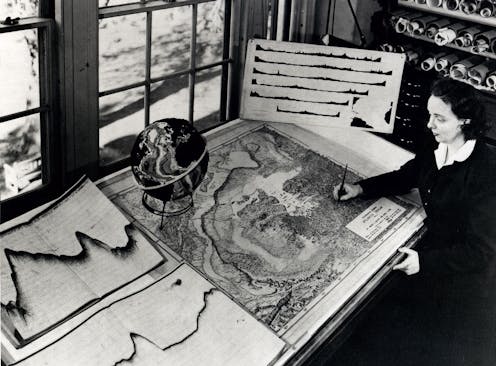
- Harold T. Stearns Professor of Earth Science, Wesleyan University

La géologue et cartographe américaine Marie Tharp (1920-2006) a révolutionné la conception scientifique du fond océanique, en montrant que ce n’était pas une surface plane ni uniforme.
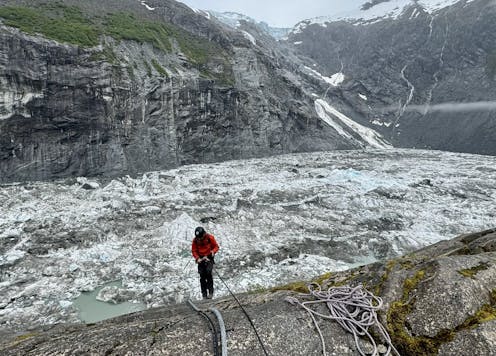
Suicide Basin, an ice-dammed lake on an arm of Mendenhall Glacier, has filled up with meltwater and sent destructive surges of water into Juneau for 3 straight summers.

Quando o permafrost das montanhas descongela e as geleiras derretem, os lagos glaciais podem se tornar um risco de inundação letal para qualquer pessoa a jusante.
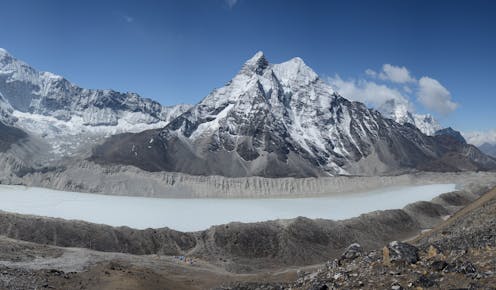
When mountain permafrost thaws and glaciers melt, glacial lakes can become lethal flood risks for anyone downstream.
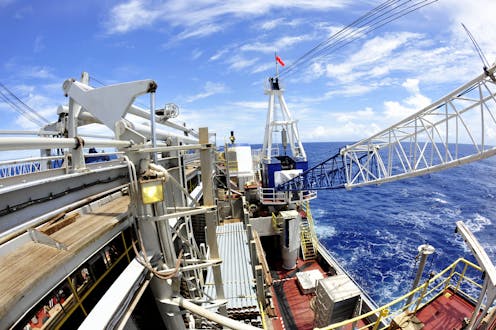
The National Science Foundation says that the JOIDES Resolution has become too costly to fund. But scientists say its $72 million annual budget pales compared with discoveries the ship has enabled.
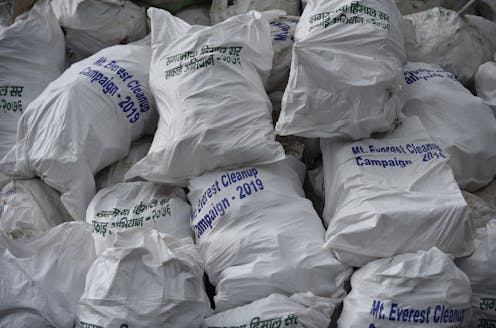
Mountain tourism brings revenues to Nepal but leaves a mess behind. Local and international groups are offering new cleanup strategies.

Mulai dari kepiting berbulu yang mengenakan topi spons laut hingga cacing yang bersinar dalam gelap, para ilmuwan terus menemukan bentuk kehidupan baru yang menakjubkan di lautan.

From fluffy crabs that wear sea sponge hats to worms that glow in the dark, scientists are constantly finding amazing new life forms in the ocean.

Discover the stories of five trailblazing women – Tharp, Nice, Tu, Noether and Wu – who worked in STEM during the 20th century.

Oceanographer Robert D. Ballard, who is best known for finding the wreck of Titanic, has written a memoir recounting his biggest discoveries and calling for more ocean exploration.

L’océan Atlantique continue de s’étendre mais les hommes surexploitent ses ressources, dont l’espèce la plus célèbre – la morue – illustre les ravages de la pêche à outrance.

Samudra Atlantik masih berkembang, namun manusia sudah melakukan eksploitasi terhadap sumber daya yang ada. Contoh terkenal untuk kasus overfishing adalah ikan kod di Atlantik Utara.

El Océano Atlántico sigue creciendo físicamente, pero los humanos estamos sobreexplotando sus ricas pesquerías. La especie más famosa -el bacalao del Atlántico Norte- se ha convertido en un ejemplo de libro de sobrepesca perjudicial.

The Atlantic Ocean is still growing physically, but humans are over-harvesting its rich fisheries. The most famous one – North Atlantic cod – has become a textbook example of harmful overfishing.

Born on July 30, 1920, geologist and cartographer Tharp changed scientific thinking about what lay at the bottom of the ocean – not a featureless flat, but rugged and varied terrain.

Di beberapa tempat, lautan bisa sedalam 7 mil. Para ilmuwan mengeksplorasi bawah lautan telah menemukan mahkluk laut yang unik, formasi geologi yang aneh dan mencatat sejarah lautan.

In some places, the ocean is almost 7 miles deep. Scientists exploring the ocean floor have found strange sea creatures, bizarre geologic formations and records of Earth’s history.

A paleooceanographer describes her ninth sea expedition, this time retrieving cylindrical ‘cores’ of the sediment and rock that’s as much as two miles down at the ocean floor.

El suelo oceánico contiene información única sobre la historia de la Tierra. Las perforaciones científicas en los océanos, que comenzaron hace 50 años, han permitido comprender mejor el cambio climático, los riesgos geológicos y las condiciones clave para la vida.

The ocean floor holds unique information about Earth’s history. Scientific ocean drilling, which started 50 years ago, has yielded insights into climate change, geohazards and the key conditions for life.
Contact Suzanne for
- General
- Media request
- Speaking request
- Consulting / Advising
- Research collaboration
- Research supervision
- Middletown, Connecticut, U.S.
- @geosuzanne
- Article Feed
- ORCID
- Joined